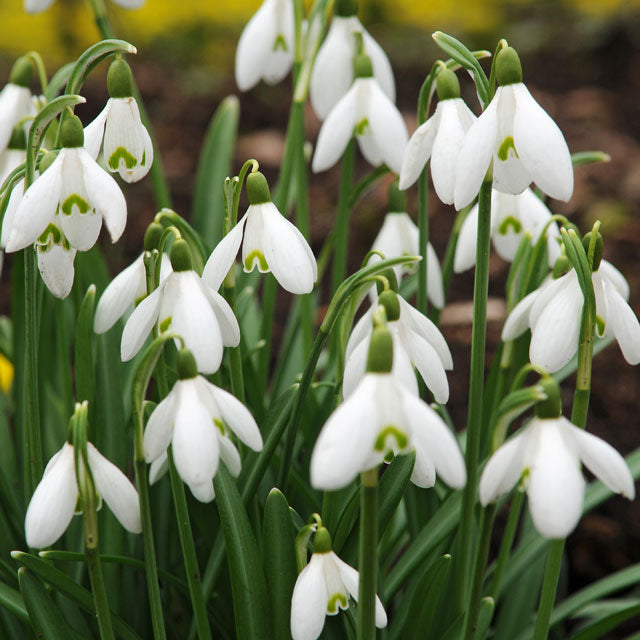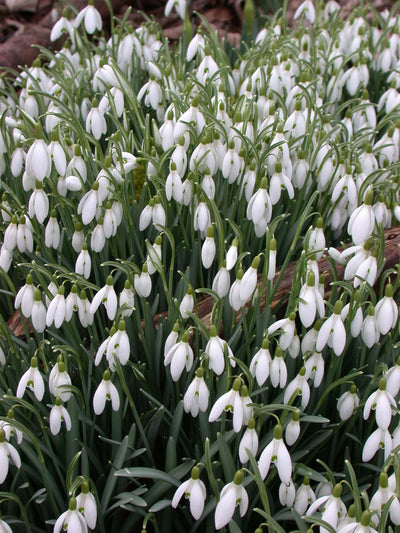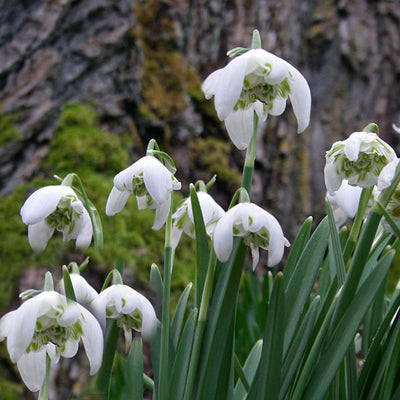Planting Guide
Galanthus

How to Plant Snowdrop Bulbs
When to plant:
Galanthus, more commonly known as snowdrops, are among the earliest bulbs to flower, often blooming while snow is still on the ground. They are fully hardy and can stay outdoors all winter without frost protection. For best results, plant your snowdrop bulbs between September and mid-November. If you can’t plant them right away, store them briefly in a cool, dry place with good airflow.
Where to plant:
Snowdrops thrive in borders, beneath trees, among shrubs, in woodland-style gardens, or even naturalized through lawns and grassy areas. They also do well in patio containers. Choose a spot with full sun to partial shade, ideally somewhere they can brighten up the garden in late winter and early spring. Snowdrops will perform well in shady locations if you can’t find a bright spot.
Soil preparation:
Good drainage is essential. If your garden soil is heavy or clay-rich, work in plenty of organic compost mixed with grit or sand to improve texture. For containers, use a high-quality peat-free multipurpose compost.
How to plant:
- Plant bulbs 5–10 cm deep, always with the pointed tip facing upward.
- Space them 5–10 cm apart. For a natural, woodland look, cluster bulbs in groups rather than neat rows.
- Cover over with soil and water well. Through winter, snowdrops need little to no additional watering, unless the season is unusually mild and dry. In spring, only water during prolonged dry spells.
- Expect to see your snowdrops in bloom in late winter or early spring.
Aftercare:
Snowdrop bulbs can be left in the ground year after year to multiply and form drifts of flowers. After blooming, remove faded flower stems but allow the fine, grass-like leaves to fully yellow and die back naturally. This process feeds the bulbs for next year’s growth.






